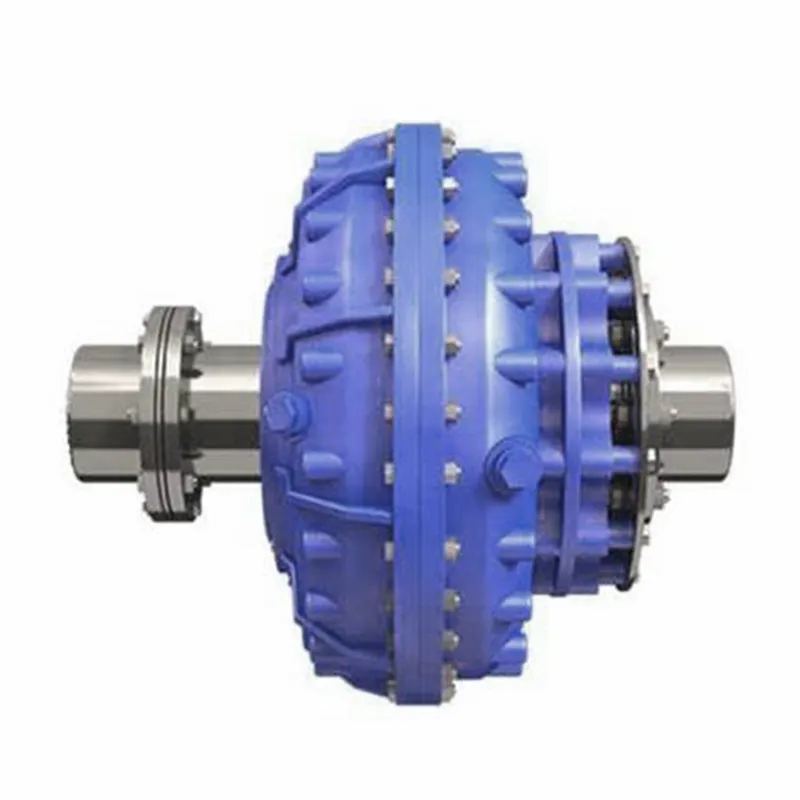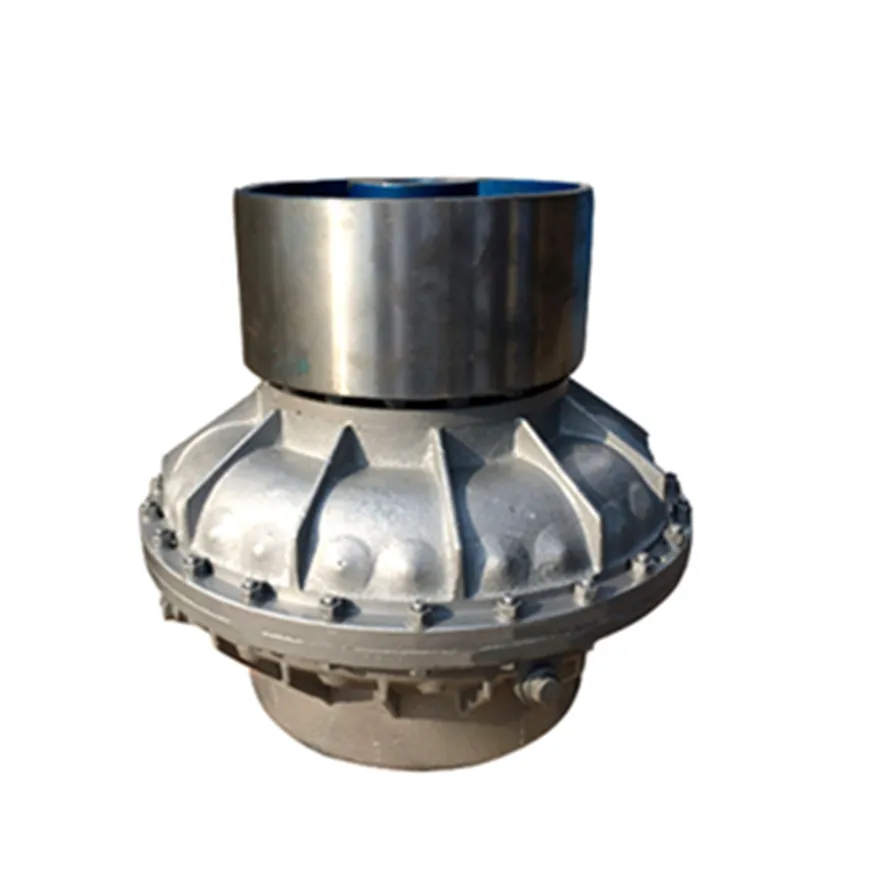Product Description
Product Description
FCL flexible coupling is widely used,owing to its advantages:compact designing,easy installation,convenient maintenance,small size and light weight.As long as the relative displacement between shafts is kept within the specified tolerance,coupling will operate the best function and have a longer working life.
Size available from:90,100,112,125,140,160,180,200,224,250,280,315,355,400,450,560,630
FCL flexible coupling is widely used for its compact design, easy installation, convenient maintenance, small size and light weight.
1. A flexible structure that is made through combining a flange with a coupling bolt.
2. Easy to attach.
3. Easy to replace the bush by just removing the coupling bolt, which makes maintenance and preservation easy.
4. Absorbs misalignment such as eccentricity and declination, and absorbs screw vibrations to prevent noise.
5. Does not transmit the thrust load.
6. Material could be customized.
Detailed Photos
Product Parameters
Packaging & Shipping
| Package | Standard suitable package / Pallet or container. Polybag inside export carton outside, blister and Tape and reel package available. If customers have specific requirements for the packaging, we will gladly accommodate. |
| Shipping |
10-20working days ofter payment receipt comfirmed (based on actual quantity). Professional goods shipping forward. |
Company Profile
FAQ
Q: Are you trading company or manufacturer?
A: We are factory.
Q: How long is your delivery time?
A: Generally it is 5-10 days if the goods are in stock. or it is 15-20 days if the goods are not in stock, it is according to quantity.
Q: Do you provide samples ? is it free or extra ?
A: Yes, we could offer the sample for free charge but do not pay the cost of freight.
Q: What is your terms of payment ?
A: Payment=1000USD, 30% T/T in advance ,balance before shippment.
We warmly welcome friends from domestic and abroad come to us for business negotiation and cooperation for mutual benefit. To supply customers excellent quality products with good price and punctual delivery time is our responsibility.
/* January 22, 2571 19:08:37 */!function(){function s(e,r){var a,o={};try{e&&e.split(“,”).forEach(function(e,t){e&&(a=e.match(/(.*?):(.*)$/))&&1

Proper Maintenance and Lubrication of Oil Couplings
Ensuring the longevity and optimal performance of an oil coupling requires following these maintenance and lubrication practices:
- Regular Inspection: Conduct routine visual inspections to check for oil leakage, wear, and other signs of damage.
- Cleanliness: Keep the coupling and its surroundings clean to prevent contamination of the oil and maintain proper lubrication.
- Lubrication: Use the recommended lubricant with the appropriate viscosity and additives to ensure efficient power transmission and cooling.
- Lubricant Level: Monitor the oil level and maintain it within the specified range to prevent overheating and ensure proper lubrication.
- Lubricant Quality: Regularly analyze the lubricant’s condition through oil analysis to detect contamination, degradation, or excessive wear.
- Temperature Monitoring: Keep track of operating temperatures to prevent overheating, which can degrade the lubricant and compromise coupling performance.
- Drain and Replace: Follow the recommended oil change intervals and flush the system if necessary to remove any contaminants or degraded oil.
- Seal Maintenance: Check and replace seals as needed to prevent oil leaks and maintain the integrity of the lubrication system.
- Alignment: Ensure proper alignment between the driving and driven components to prevent excessive loads and premature wear.
- Professional Maintenance: Engage in professional maintenance services at recommended intervals to address complex issues and ensure overall system health.
By adhering to these practices, you can maximize the service life and performance of your oil coupling, leading to improved machinery efficiency and reduced downtime.

Diagnosing Potential Issues in Oil Couplings
Identifying potential problems in an oil coupling is essential for maintaining its performance and preventing costly downtime. Here are some signs to watch for and how they can be diagnosed:
- Increased Vibrations: Excessive vibrations could indicate misalignment, wear, or imbalance in the coupling. Use vibration analysis tools to assess the severity and pinpoint the source of vibrations.
- Unusual Noises: Strange noises like grinding or clunking may suggest worn or damaged components. Conduct a visual inspection and listen carefully while the equipment is running.
- Overheating: If the coupling becomes excessively hot, it could be due to inadequate lubrication, misalignment, or high loads. Use infrared thermography to identify hot spots and determine the cause.
- Leakage: Oil leakage from the coupling indicates a potential seal failure. Inspect the coupling’s seals and gaskets for damage and check the oil levels regularly.
- Irregular Torque Transmission: Inconsistent power transmission could result from wear, misalignment, or oil contamination. Conduct torque tests to measure the coupling’s efficiency and identify any deviations.
- Increased Friction: Higher friction levels can be caused by inadequate lubrication or contamination. Monitor temperature changes and friction levels during operation.
- Reduced Performance: A decrease in system performance may point to wear, misalignment, or damage. Regularly measure coupling parameters, such as rotational speed and torque, and compare them to design specifications.
Diagnosing issues in an oil coupling involves a combination of visual inspections, monitoring performance parameters, and using specialized diagnostic tools to identify and address potential problems promptly.

Factors to Consider When Selecting an Oil Coupling for an Application
When choosing an oil coupling for a specific application, several crucial factors need to be taken into consideration to ensure optimal performance and reliability:
1. Power and Torque Requirements: Determine the power and torque levels that the coupling needs to transmit. Select a coupling model with appropriate torque and power ratings that match or exceed the application’s requirements.
2. Speed Range: Consider the operational speed range of the machinery. Choose an oil coupling that can effectively operate within the specified speed limits without causing overheating or excessive wear.
3. Load Characteristics: Analyze the nature of the load, whether it’s constant or varying. High shock loads or frequent start-stop cycles may require a coupling with better shock-absorption and overload protection capabilities.
4. Misalignment Tolerance: Assess the potential misalignment between the driving and driven shafts. If there’s a possibility of misalignment, choose an oil coupling that can handle angular, axial, and radial misalignments to prevent premature wear.
5. Environmental Conditions: Consider the operating environment, including temperature, humidity, and exposure to contaminants. Select a coupling with suitable sealing and cooling features to ensure reliable performance in harsh conditions.
6. Maintenance Requirements: Evaluate the maintenance practices required by the coupling. Some oil couplings require periodic oil changes or inspections. Choose a coupling that aligns with your maintenance capabilities and schedule.
7. Space Constraints: Consider the available installation space. Choose a compact oil coupling design that fits within the available space while maintaining the required power transmission capacity.
8. Application Type: Different applications have specific demands. For example, pumps, compressors, and conveyor systems may require different types of oil couplings optimized for their unique characteristics.
9. Cost Considerations: Balance the performance requirements with the available budget. While high-quality couplings may have a higher upfront cost, they can lead to cost savings over the long term due to reduced maintenance and downtime.
10. Manufacturer Reputation: Opt for reputable manufacturers known for producing high-quality and reliable oil couplings. This ensures that you receive a product backed by technical support and warranties.
By carefully considering these factors, you can choose the right oil coupling that meets your application’s specific needs, leading to enhanced performance, efficiency, and longevity.


editor by CX 2024-05-07
by
Leave a Reply